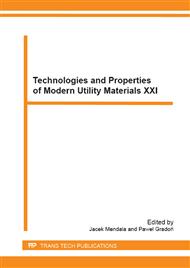p.205
p.211
p.215
p.221
p.225
p.229
p.237
p.243
p.247
X-Ray Analysis of the Precipitation Process in an Fe-Ni Superalloy
Abstract:
The influence of prolonged ageing on the kinetics of the precipitation process of the secondary phases in an A-286 type Fe-Ni superalloy has been studied. The samples were subjected to a solution heat treatment at 980°C for 2 h and water quenched, and then aged at temperatures of 715, 750 and 780°C at holding times from 0.5 to 500 h. Structural investigations were conducted using X-ray diffraction methods. The values of the austenite lattice constant were estimated with the use of the cos2θ extrapolation function, and by the Toraya (WPPF) and Rietveld methods. It was found that the largest decrease in the austenite lattice constant took place during the initial period of ageing at all investigated temperatures, which corresponds to the spinodal decomposition of supersaturated austenite and formation of the γ'-Ni3(Al,Ti) intermetallic phase. Good agreement between the values of the austenite lattice constant determined using the extrapolation function and the Rietveld method was found.
Info:
Periodical:
Pages:
225-228
Citation:
Online since:
December 2013
Authors:
Price:
Сopyright:
© 2014 Trans Tech Publications Ltd. All Rights Reserved
Share:
Citation:


